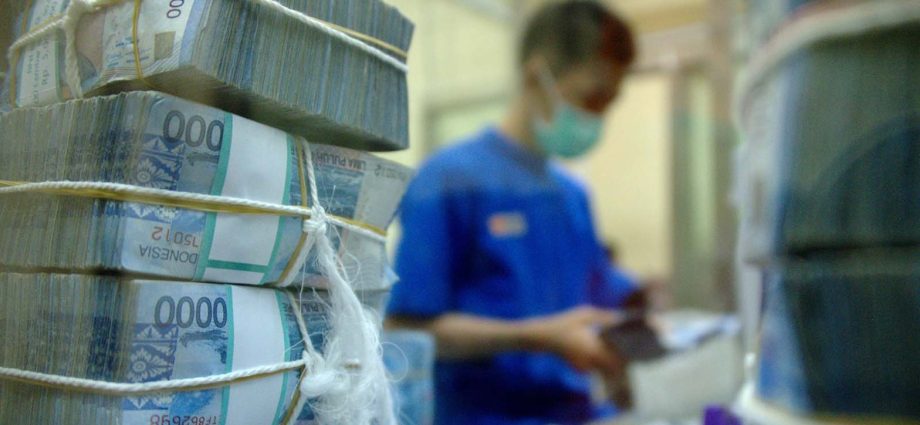The Covid-19 pandemic posed a tremendous economic challenge, especially for emerging economies such as Indonesia. But it also marked a watershed moment for the country’s economic reform efforts. The crisis enabled Indonesia to reduce its reliance on volatile foreign capital inflows and rethink its growth pathway.
During the pandemic, Indonesia was temporarily set free from its reliance on foreign capital as global investors fled emerging markets bonds and equity. At the same time, slumping domestic demand, which suppressed imports, and relatively large national savings ameliorated Indonesia’s current account deficit problem.
Russia’s war in Ukraine led to a commodity price boom that further boosted the domestic economy while it was still recovering from the pandemic.
Indonesia’s current account deficit problem stems from insufficient foreign direct investment (FDI). In 2021, Indonesia’s FDI inflow was only 1.8% of GDP, compared to Vietnam’s 4.3% and Malaysia’s 5%.
Instead, the economy has depended on volatile commodity-related exports and volatile foreign inflows in bonds and equity markets. The shallow and inadequate domestic financial market has not been able to sufficiently mobilize savings to finance the country’s investment needs.
In previous cycles of global volatility, subsequent outflows of foreign capital have significantly depreciated the Indonesian rupiah and caused liquidity crunches in the financial system.
This negatively impacted the domestic economy by increasing the government and corporate sector’s debt burden, creating inflationary pressure and raising funding costs and non-performing loans in the banking system.
Reform efforts to handle the problem by shrinking the account deficit have faced challenges. In previous years, reducing the current account deficit usually meant slowing down domestic consumption and imports, which inhibits economic growth. Efforts to boost manufacturing exports also have hit a brick wall.

As Indonesian wages are relatively higher, other Asian exporters — notably Vietnam and Bangladesh — have become more competitive.
Numerous financial scandals have undermined efforts to effectively mobilize savings and deepen financial markets. Despite these setbacks, institutional reforms are making some headway. The Ministry of Finance and Bank Indonesia are increasingly seen as credible institutions that adopt evidence-based policies, defend Western-style central bank independence and are led by respected figures.
Implementing measures to prevent excessive capital flows has proved complicated. Even a hint of capital controls or other regulations that would restrain the country’s relatively free and open capital markets have been met with resistance due to the experience of the Asian financial crisis. Relatively loose global monetary policy and prudent fiscal policies have also led to Indonesia’s rising popularity for foreign portfolio investment.
The government was quick to implement policy reforms that have partly borne fruit. The first of them is reform in the real economy. The government pushed through the Omnibus law in November 2020, which aims to improve Indonesia’s competitiveness and encourage labor-intensive industries’ growth. But its implementation is yet to be seen due to pushback by special interest groups.
The global energy crisis also inspired the government to enact a series of controversial policies, including “downstreaming” and the prohibition of raw material exports. These policies have partly contributed to increasing exports of nickel derivatives between 2011–2022 and stimulated economic growth in regional provinces.
The second policy group included financial sector reforms. The government passed a new financial omnibus bill to improve the credibility of the financial system, widen and deepen the domestic financial market, support new technologies growth and clarify crisis responses. Plans were also put in place to restructure the entire non-bank financial system after the collapse of a major state-owned insurance company in 2020.
The local bond market has grown substantially since the pandemic. Local banks are inclined to hold a large number of government bonds due to slumping credit demand, significantly boosting local ownership. The Ministry of Finance’s successful campaign to push savvy domestic investors to buy retail government bonds further mobilizes consumer savings and improves market discovery.
Indonesia’s central bank — Bank Indonesia — has also pulled its act in the domestic foreign exchange market. New derivative instruments have succeeded in driving market expectations of local currency movements and relieving pressure on the current exchange rate. The launch of a new time deposit facility for exporters also boosted foreign exchange supply.

In anticipating the sudden global dollar liquidity crunch, the central bank has intensified efforts to proliferate local currency settlements (LCS) — a program that encourages using local currencies to settle bilateral transactions — with Indonesia’s main trade partners.
Its efforts have significantly increased its monthly LCS usage. The central bank has also sought to reduce Indonesia’s reliance on foreign service providers by launching a new national credit card gateway.
Bank Indonesia has also embraced digitalization. The Indonesian QR standard has become widely available, logging over 24 million merchants and daily transactions of more than US$800 million.
It has enabled millions of informal sector vendors to interact with the mainstream financial system via Indonesia’s growing digital banking industry. This could be a potential goldmine for the government to increase fiscal policy effectiveness.
Indonesia has taken advantage of the Covid-19 pandemic and undergone fundamental reforms to address its previous flaws. Its job now is to finish implementing those “structural reforms” by enhancing the ease of doing business, reducing investment barriers and improving labor productivity and financial inclusion.
Suryaputra Wijaksana is an economist at Bank Rakyat Indonesia. The views expressed in this article are the author’s own.
This article was originally published by East Asia Forum and is republished under a Creative Commons license.

